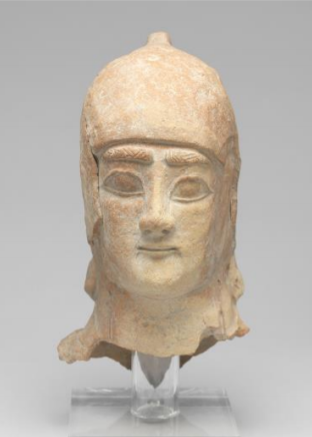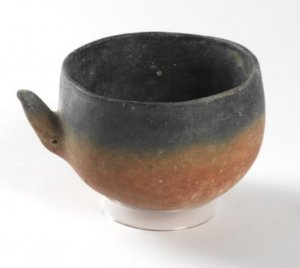
Cypro-Archaic (750-475 BC) terracotta head and shoulder of a male beardless figure from Salamis, Cyprus © Fitzwilliam Museum
Being an Islander
Art and Identity of the large Mediterranean Islands
The Fitzwilliam Museum is pleased to announce a 3-year research project (2019-2022) in the department of Antiquities focusing on Mediterranean island identity and insularity. The research will culminate in a large exhibition at The Fitzwilliam Museum planned for September 2021 – February 2022, exact dates to be confirmed.
The exhibition will showcase archaeological finds and artworks from the three islands (Cyprus, Sardinia and Crete), focussing on the idea of connectivity as an important feature of island life and of the sea as a linking rather than a dividing feature.
The project, ‘Being an Islander’: Art and Identity of the large Mediterranean Islands, aims to elucidate what defines island identity in the Mediterranean, using Cyprus, Crete and Sardinia as examples. It explores how insularity affects and shapes cultural identity and aims to provide a platform to debate cultural evolution in the islands as opposed to the surrounding mainland.
‘Being an Islander’, as a research project (2019-2022) will critically re-examine the concept of island life through material culture. It will further attempt to deconstruct the idea of ‘insularity’ perceived as a form of otherness and isolation.
This theme will be explored in an interactive way, extending to the discussion of Britain’s own (perceived or not) island identity. The exhibition’s narrative will include various topics including:
- Settlement evolution and habitation, with special emphasis to the domestic environment and island household economy;
- Divergence or similarities of burial architecture and practices across the three large Mediterranean islands;
- The study of material culture entities such as ceramics, glass and metalware as indicators of island life and the ways in which insular cultural identities were fashioned, manipulated or even imposed by islanders upon themselves as well as by foreigners.

Late Minoan IIIC /Sub-Minoan (1200 BC —
1015 BC) Bronze figure of a male worshipper,
Crete © Fitzwilliam Museum
Together with representative objects from the Fitzwilliam’s Aegean and Cypriot Collections, a number of important national and international loans will also be on display in the exhibition. Other outcomes will include:
- A peer-reviewed edited book incorporating a catalogue of the exhibition,
- An international conference to coincide with the opening of the exhibition as well as
- A public programme of engaging activities, events and workshops for all ages, centred around the theme of insular cultural identity in the Mediterranean and other European regions.
The project research and exhibition operate under the auspices of the Embassy of Greece and the Cyprus High Commission. The project is grateful for philanthropic support from the A. G. Leventis Foundation, and is further funded by the Cyprus High Commission and the Arts and Humanities Research Council, via the Research Networking Highlight Notice for UK-US Collaborations in Digital Scholarship in Cultural Institutions.

An Early Cypriot I (2400-2150 BC) red-polished ware,
horn-lug jar from Vounous (Tomb 90) Cyprus,
© Fitzwilliam Museum
For more project information please, contact lead project investigator and curator, Dr Anastasia Christophilopoulou (ac380@cam.ac.uk), or visit: www.bit.ly/2TscTn3





